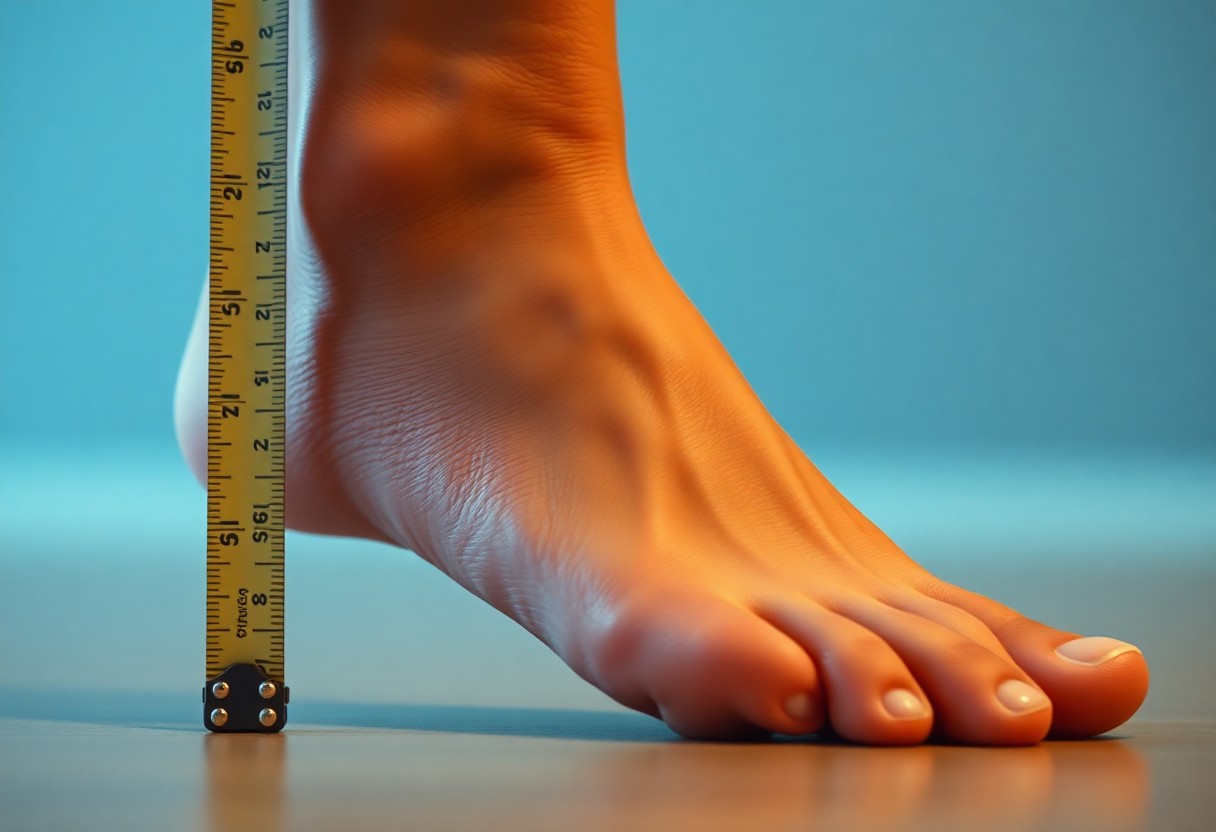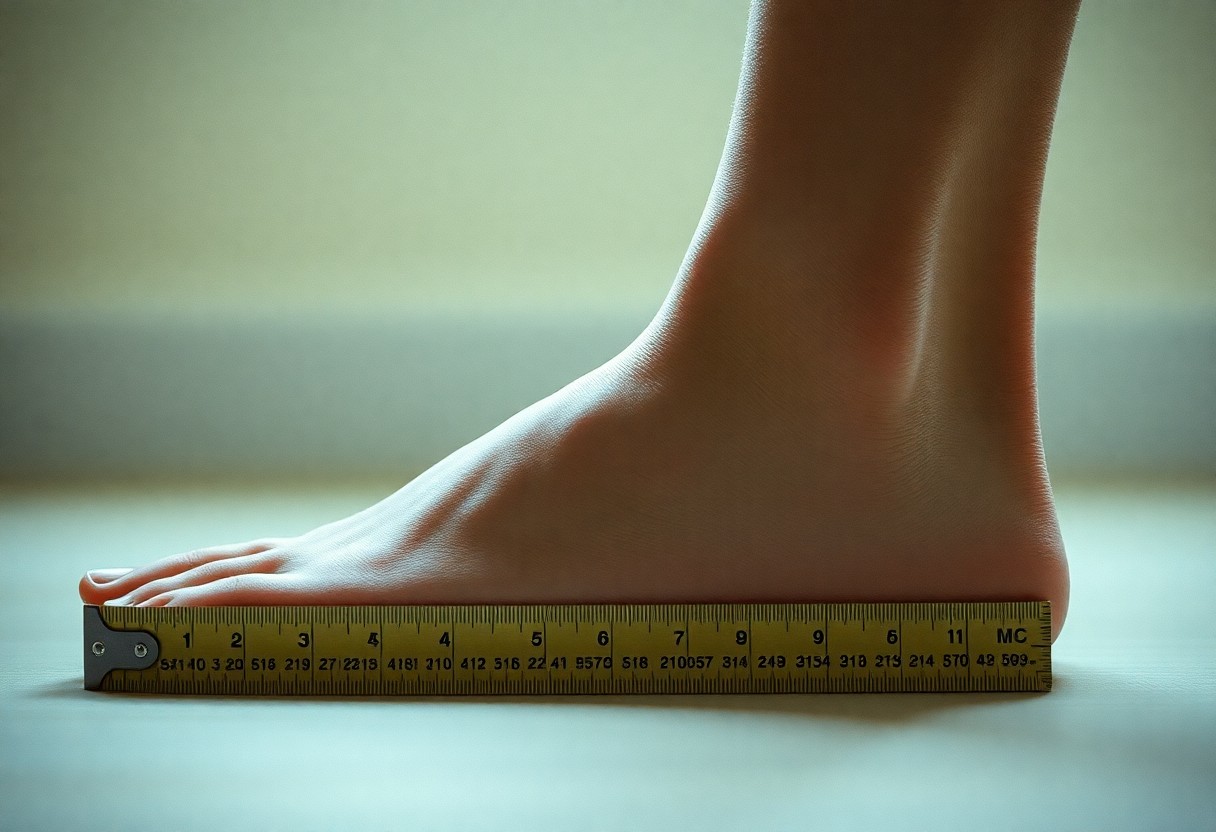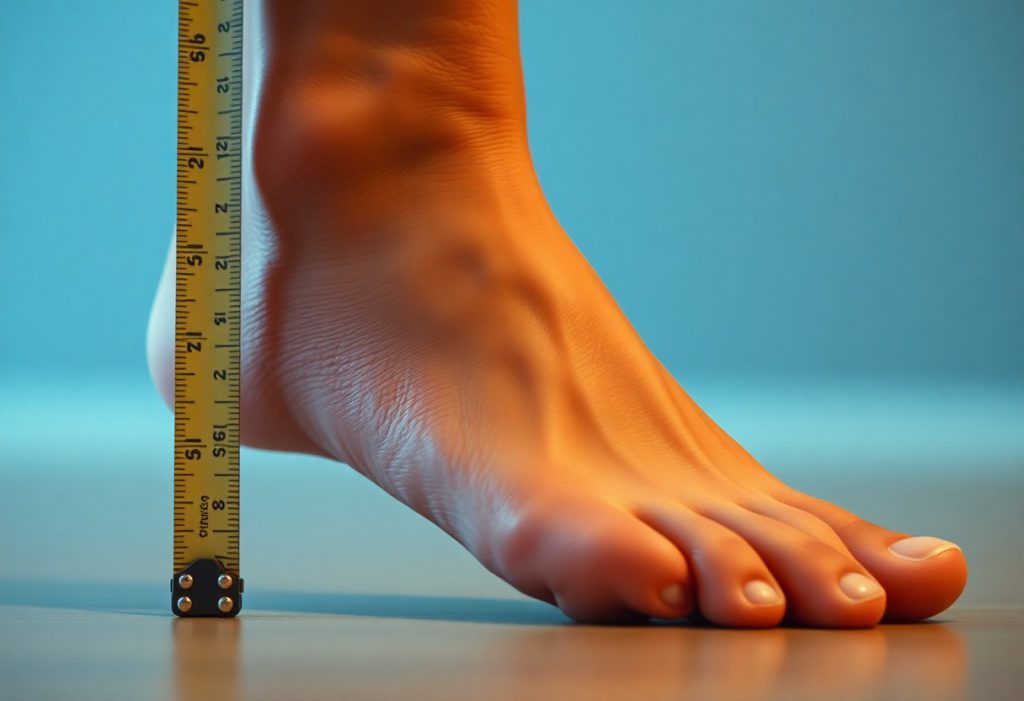Persistent foot discomfort and challenges with shoe fitting are prevalent issues that many individuals face, making it crucial to understand your foot width for achieving optimal foot health. If you frequently experience pressure points on the sides of your feet, shoes that feel excessively tight despite being the correct length, or recurrent blisters along your foot edges, it’s essential to take action. Properly fitting shoes can greatly enhance your comfort, and accurately identifying your foot width is the first vital step toward achieving that comfort. This comprehensive guide will empower you with straightforward at-home methods to determine if you have wide feet, enabling you to make informed shoe choices and steer clear of potential foot complications.
Gain Insights into Wide Feet and Its Impact on Your Comfort
For many individuals, the presence of wide feet is simply a natural variation in foot anatomy. Various factors, including bone structure, muscle composition, and tissue distribution, contribute to a wider foot profile. By gaining a deeper understanding of this condition, you can make more informed footwear selections and maintain proper foot health. Having wide feet can significantly affect your overall mobility, comfort level, and even your posture, highlighting the importance of wearing shoes specifically designed for your unique foot shape.
Exploring Genetic Influences on Foot Width
Your genetic background is a key determinant of your foot width. Many foot characteristics, such as bone structure and arch height, are inherited from your parents. Studies indicate that around 60% of the variations found in foot width can be traced back to hereditary factors. This genetic influence shapes the size and shape of your feet from birth, making it vital to recognize these traits when selecting suitable footwear that accommodates your foot structure.
How Lifestyle and Environment Shape Your Foot Width
Contrary to common beliefs, your everyday lifestyle choices and habits can significantly influence your foot width over time. Key factors contributing to this change include:
- Prolonged standing
- Weight fluctuations
- Inappropriate footwear
- Physical activities
Each of these influences can lead to gradual foot widening, which is why it’s essential to consider your daily activities and lifestyle choices when assessing your foot health and comfort levels.
A combination of daily habits and lifestyle factors can profoundly affect your foot width. Take a moment to consider these influences:
- High-impact physical exercises
- Pregnancy
- Aging
- Medical conditions
Each of these elements calls for special attention to foot care and selecting appropriate footwear to ensure both comfort and support for your unique foot shape.

Proven Techniques for Measuring Your Foot Width Accurately
You can determine your foot width accurately through two primary methods: professional assessments and at-home techniques. Obtaining precise measurements is crucial for finding comfortable shoes that help prevent various foot-related issues. It’s important to measure your foot width at its widest point, typically across the ball of your foot, to ensure a proper fit that supports your foot health.
Utilizing Professional Shoe Fitting Services for Accurate Measurements
Professional shoe fitting experts use advanced techniques, such as the Brannock Device, which provides precise measurements of both length and width. This professional measurement guarantees accuracy and helps identify specific foot characteristics that influence how shoes fit you. After measuring, your foot width is matched against standardized sizing charts used by various shoe manufacturers to ensure that you get the best possible fit tailored to your feet.
Easy At-Home Foot Measurement Techniques to Try
The best time to measure your feet is around midday when they naturally expand during daily activities. To begin, gather a piece of paper, a pencil, and a measuring tape or ruler. Stand on the paper to capture the most accurate measurements of both your feet.
For at-home measurements, follow these steps: trace your foot’s outline while standing, measure the widest part of your foot, and compare your findings to standard size charts. Be sure to measure both feet, as it’s common for one foot to be slightly larger than the other. For enhanced accuracy, measure across the ball of your foot and subtract 1/8 inch from the final measurement to account for any minor discrepancies.

Recognizing Key Indicators of Wide Feet
Identifying wide feet can often be achieved by recognizing various clear signs. Pay close attention to specific physical markers and daily comfort issues. Studies show that around 30% of individuals wear shoes that are the wrong width, frequently unaware that they have wide feet. Understanding your foot width is directly connected to your overall foot health and comfort during daily activities, making it essential to identify and address any discrepancies.
Physical Signs That Indicate You Might Have Wide Feet
To assess whether you have wide feet, closely examine the appearance and behavior of your feet. Look for visible signs such as foot spillage over the sides of your shoes, indentations on your feet caused by tight footwear, and a splayed foot shape when standing. Ensure that your toes have ample room to move freely, and check that the ball of your foot fits comfortably without causing pressure points.
Everyday Discomfort: Signs That Your Footwear May Be Too Narrow
Common discomfort indicators include frequent blisters on the sides of your feet, numbness in your toes, and persistent discomfort while wearing your shoes. You may notice your shoes stretching sideways over time or feel relief when you remove them. These symptoms often signify that your footwear is too narrow for your foot width.
Recognizing these discomfort signals can empower you to make better-informed shoe selections. Failing to acknowledge these signs can lead to long-term foot complications, such as bunions and corns. Your shoes should offer adequate width from heel to toe, with approximately a thumb’s width of space between your longest toe and the shoe’s tip. If you consistently feel pressure on the sides of your feet, consider seeking professional measurement to ensure accuracy.
Utilizing a Comprehensive Width Chart for Proper Shoe Fitting
Not all feet are uniform, and understanding your foot width is just as important as knowing its length when searching for the right shoes. A width chart can assist you in correlating your foot measurements with the appropriate shoe width, which typically ranges from AA (narrow) to EE (extra wide). Familiarizing yourself with these measurements can significantly enhance your overall comfort in any footwear.
Breaking Down Standard Foot Measurements for Better Understanding
To achieve accurate foot measurements, it’s essential to be standing, as your feet naturally spread under your body weight. Measure your foot width at the widest part of your foot, typically across the ball. For women, a standard width (B) falls between 3.4 to 3.6 inches, while for men, a standard width (D) usually ranges between 3.8 to 4.0 inches.
Understanding Variations in Shoe Width Sizes for Better Fit
Width size variations can differ by up to 1/4 inch between letter categories (A, B, D, E). Your feet may require different widths based on their unique shapes, and it is not uncommon to have one foot slightly wider than the other. Always prioritize fitting shoes to your wider foot to ensure optimal comfort and support during wear.
Considering the natural fluctuations in foot size throughout the day, it is advisable to measure your feet in the afternoon or evening when they are at their largest. Factors such as weight changes, pregnancy, or aging can also influence your foot width, making regular measurements essential for selecting appropriate shoes.
Reflecting on Your Shoe-Fitting Experiences for Improved Comfort
Your past shoe-fitting experiences can provide valuable insights into your foot width. If you routinely encounter discomfort at the sides of your shoes or find yourself needing to size up merely to gain extra width, these signs are significant indicators. Many individuals with wide feet report needing to purchase shoes 1-2 sizes larger than their actual foot length just to accommodate their width requirements.
Testing Your Current Footwear for Width Compatibility
Above all, it’s essential to evaluate your current shoes for their width compatibility. Stand on a piece of paper and trace the outline of your foot. If you notice that your foot spills over the sole of your shoe when compared to this tracing, it is likely that you have wide feet. This simple test can help prevent future foot complications and guide you towards selecting more suitable shoe options that enhance your comfort levels.
Identifying Pressure Points in Your Footwear for Optimal Fit
Approximately 72% of individuals wear incorrectly sized shoes, which often leads to uncomfortable pressure points. You can identify these pressure points by examining areas where your current shoes show excessive wear patterns or where redness appears on your feet after prolonged wear.
It is crucial to recognize that pressure points can lead to long-term foot complications if left unaddressed. Regularly monitoring areas where your shoes feel tight, especially across the ball of your foot and the sides, can help prevent painful conditions like bunions and corns. Quick relief from pressure indicates that your shoes may be too narrow, suggesting that it’s time to explore wide-width options for improved comfort.

Choosing the Right Time for Accurate Foot Measurements
Accurate foot measurements should be taken at specific times during the day for reliable results. Your feet naturally change size throughout the day because of physical activity and fluid retention. Taking measurements consistently at the same times will yield trustworthy shoe sizing data that you can rely on when making purchases.
Establishing a Morning Baseline for Foot Width
To determine your baseline foot width, measure your feet first thing in the morning. After a night of rest, your feet are typically at their smallest size, providing a measurement that reflects the minimum width you need for comfortable footwear. This baseline can help you understand the range of widths needed throughout the day.
Evening Measurements: Ensuring the Best Possible Fit
Before purchasing shoes, measure your feet in the evening when they are likely to be at their largest size. Your feet can expand by as much as 8% throughout the day due to walking and standing, which is a critical factor to consider for ensuring a comfortable fit that supports your foot health.
Additionally, it’s important to note that your evening measurements may be up to half a size larger than your morning measurements. This size discrepancy highlights the need to always select shoes based on your evening foot measurements to prevent discomfort and potential foot health issues.
Essential Takeaways for Understanding Your Foot Width
Determining whether you have wide feet involves straightforward steps that you can undertake at home or with the help of professionals. Your foot measurements, daily comfort in shoes, and visible signs such as bulging sides can provide valuable insights into whether you need wide-width footwear. Measure your feet with a ruler, watch for red marks after wearing shoes, or consult a shoe store for professional sizing. By understanding your foot width, you can select shoes that fit better, thereby preventing discomfort and potential foot issues. Making educated decisions about your footwear based on these indicators will ensure that your feet remain healthy and comfortable.
Addressing Common Questions About Foot Width
Q: How can I accurately measure my foot width at home?
A: Start by placing a blank piece of paper on a flat surface, step onto it with your bare foot, and trace the outline. Measure the widest part of the outline using a ruler, ensuring to perform this measurement for both feet in the evening when they are at their largest. A width exceeding 4 inches for men or 3.5 inches for women generally indicates wide feet.
Q: What physical signs suggest that I might have wide feet?
A: Look for these clear indicators: cramped toes in regular-width shoes, red marks on the sides of your feet after wearing shoes, shoes that stretch sideways over time, or pressure felt on the sides of your feet. All these symptoms suggest that your shoes may be too narrow for your foot width.
Q: Is the wet foot test a reliable method for checking for wide feet?
A: Yes, the wet foot test can be effective. Wet your bare foot and step onto a brown paper bag or dark surface. If your footprint reveals a broad middle section occupying most of the print’s width, it’s likely that you have wide feet. Compare your footprint width with standard size charts available online or in shoe stores to confirm your foot width classification.
The Article How to Determine If You Have Wide Feet: Simple Methods and Signs to Check appeared first on My Shoes Finder
The Article Wide Feet: Simple Methods and Signs to Check Your Size Was Found On https://limitsofstrategy.com



Your post highlights a genuinely overlooked aspect of foot health that’s often dismissed in the shoe industry. As someone who’s dealt with persistent foot discomfort, I can relate to the struggles of finding properly fitting shoes. It’s disheartening that many brands still seem to value aesthetic over comfort, often neglecting those with wider feet.
You’ve hit on a critical point that many people struggle with but often feel alone in discussing. Foot health, especially in relation to shoe fit and comfort, is something that gets sidelined all too often. It’s frustrating to navigate a market that prioritizes style over the fundamental need for properly fitting shoes. For many of us, comfort goes hand-in-hand with confidence, and without the right footwear, it can feel like a constant battle.
It’s interesting how often we overlook something as fundamental as our foot width when it comes to comfort and health. I’ve struggled for years to find shoes that fit well, often settling for options that were tight on the sides, which only added to my discomfort. Once I finally took the time to measure my foot width at home, it was a game changer. I realized I needed to explore brands that cater specifically to wider fits, which has made a significant difference.
You’ve touched on something that a lot of people don’t really think about until they’re dealing with the discomfort themselves. It’s surprising how much we sometimes ignore the basics when it comes to our own well-being. Choosing shoes that fit correctly can feel like a luxury rather than a necessity, but it really shouldn’t be that way.
I’ve definitely felt the struggle with shoe fitting myself! It’s interesting how something as seemingly simple as foot width can really throw a wrench in our comfort levels. For years, I neglected to consider my foot shape and just assumed the issues were just part of wearing shoes. It wasn’t until I started investigating the different widths that I realized how much it could affect my day-to-day comfort.
It’s really eye-opening when you start to pay attention to how something like foot width influences your comfort. Many of us toss on shoes without questioning why they fit the way they do. After all, a lot of people wear the same sizes without thinking about varying shapes or widths. It’s great to hear you took the step to explore this further.
You make a really good point about how something as simple as foot width can impact overall comfort. I’ve definitely had my own struggles with shoe fitting too. It’s fascinating how many people overlook foot shape when shopping for shoes, often just focusing on the style or color instead.
I can really relate to what you’re saying about shoe fitting. It’s funny how something so fundamental can create such discomfort in our lives. I had a similar experience when I started paying attention to my foot shape. I’d always just picked up whatever looked good, but once I started exploring width options, it was like a light bulb went off.